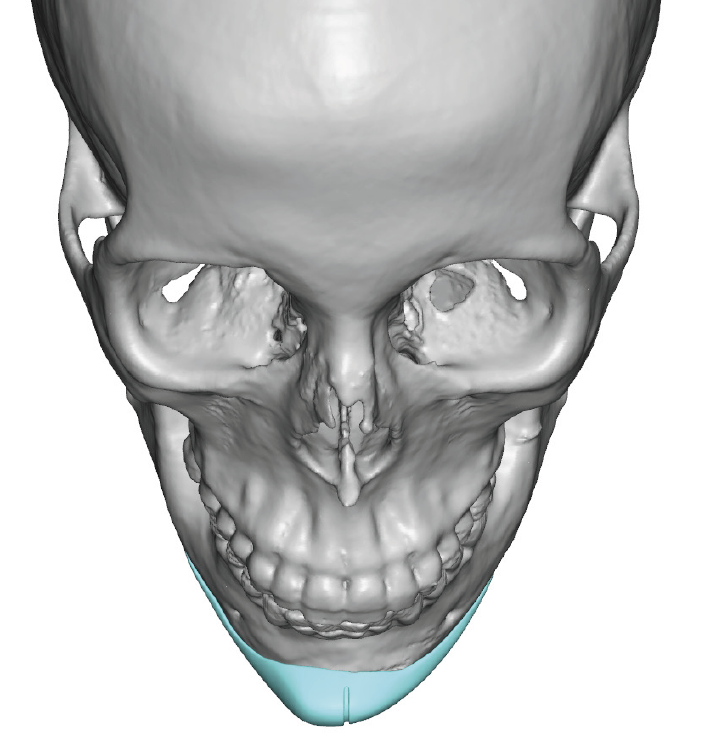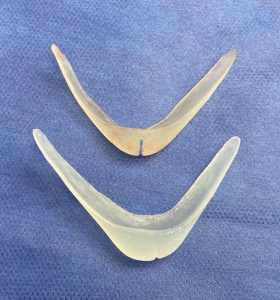Background: Chin implants exert their effects by a soft tissue release which then floats on top of an intervening implant placed between it and the bone. In other words chin implants require that several osteocutaneous ligaments be detached from the bone along with the periosteum to create an adequate pocket for the implant placement.
This soft tissue release concept is the same whether the chin implant is placed ideally or in poor position. The latter is particularly relevant when it comes to the need for an undesirably placed chin implant removal and a new one placed. As a result soft tissue releases have been in areas that are not needed which may cause some soft tissue issues when a properly placed chin implant is placed. This is particularly relevant to releases that are done below or along the inferior border of the jawline.
Custom chin implants offer many advantages over standard chin implants, particularly when it comes to any bony asymmetry. But in the case of chin asymmetry which is soft tissue-based the implant designing is less clear. Unlike the bone the soft tissue is not clearly seen in a 3D CT scan. As a result how to make the implant compensate for the soft tissue deficiency must be estimated.
Case Study: This female has an initial standard chin implant in which she was happy both with it asymmetric position on the bone and its size/shape. The asymmetry of the standard chin implant was caused by the right side being below the inferior border and the left being tilted way above it. It was replaced with a custom made chin implant that was designed with the same horizontal projection but with symmetric wings that were longer than the original standard chin implant. Despite perfect placement there remained a right-sided chin asymmetry that was evident of being soft tissue based. (probably caused by inferior pocket dissection from the original standard chin implant placement)
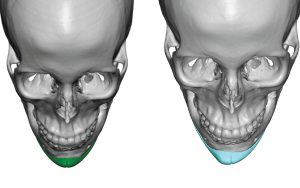
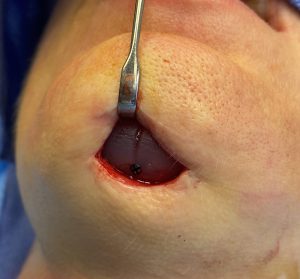
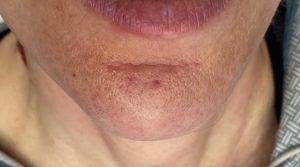
It is fairly uncommon to make an asymmetric custom chin implant design based on a soft tissue problem. There are less invasive ways to correct the soft tissue asymmetry. But for an implant-based approach the amount of additional implant material in the affected side must be estimated. In doing that estimation it is prudent to not over estimate it and cause an actual implant-based asymmetry.
Case Highlights:
1) Chin implants and their effects, whether they are standard or custom, are based on the shape of the underlying bone.
2) Soft tissue chin pad defects may not be adequately if the design is exclusively based on the bone.
3) Compensating for a soft tissue defect in custom chin implant designs can be done but it is more of an estimation unlike that of the bone which is a more exacting design method.
Dr. Barry Eppley
Indianapolis, Indiana

